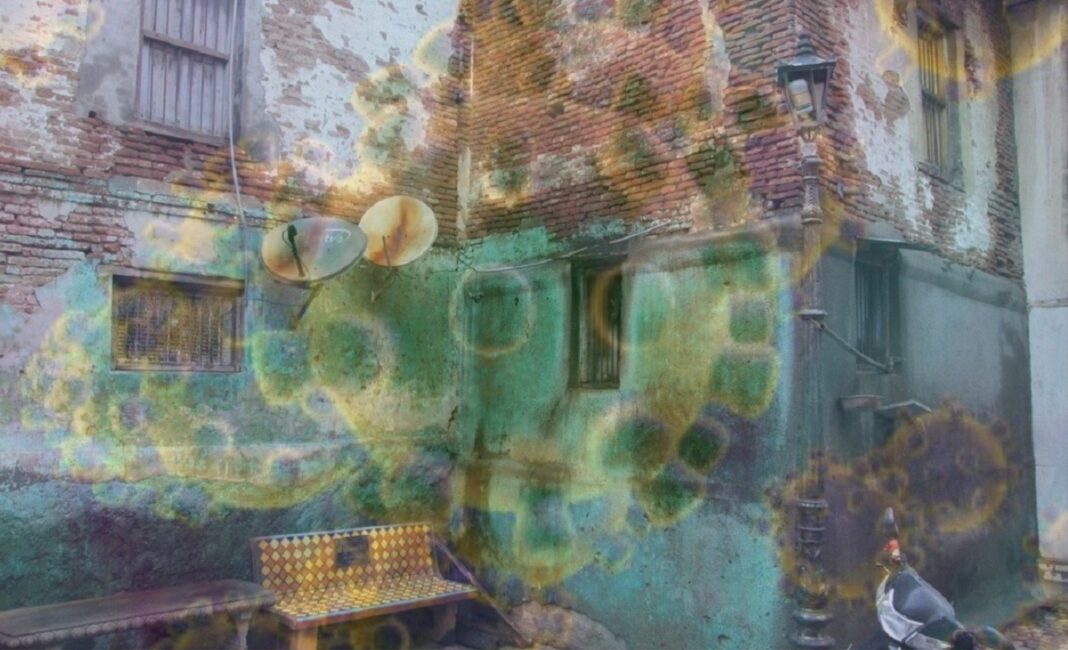INDIA. Walled City of Ahmadabad, Gujarat. Tradition is at loggerheads with the ongoing pandemic as residents of the heritage Pols in India’s western state of Gujarat grapple with the restrictions imposed to contain the spread of COVID-19. A traditional form of community living, Pols are self-contained neighborhoods, located in the centuries old Walled City of Ahmadabad, grouping people of the same caste or vocation. The Pols’ ancient lay-out, with chaotic narrow lanes connecting beautiful heritage houses and community facilities, is a nightmare for the authorities trying to enforce lockdown and social distancing in a bid to beat the spread of the dreaded COVID-19. Ahmadabad also attracts tourists from all over the world to visit Gandhi Ashram, set up by Mahatma Gandhi in 1915 on the banks of the River Sabarmati.
India’s fight against COVID-19. India has been fighting COVID-19 for over three months now. But people’s lives still remain drastically affected as the virus shows no signs of letting up.
Hundreds of thousands of lives have been lost across the globe and India is not far behind. The number of cases is now hovering around half a million mark. However, India is still in a better position – if we look at the infected population percentage, which in Spain is 0.52 whereas in India it is 0.03. Also if we compare the death rates, we see Spain recording 11.53% with India far behind at 3.23. The net recovery rate is also showing a steady growth.
Challenge facing the pols. Every state, every city administration, and every citizen is fighting it out, so are the Pols in the Walled City of Ahmadabad. Inhabitants of the Pols have successfully gotten through earlier pandemics, such as the Spanish Flu, maintaining brotherhood and harmony.

OLd building clusters in Pol 
Old building in Pols
Social distancing a luxury. During the current pandemic, the lifestyle of people in the densely populated clusters is of a great concern. This distribution of the population created anxiety in the minds of Ahmadabad authorities as to how they will manage social distancing and other measures in these community sectors as they are alien concepts. It is an “impossible luxury” for many, especially in the lower income settlements, where sharing meals, personal hygiene products and even beds are part of the family collective. Hence, to expect them to adopt best practices during these exceptional times is quite unrealistic.
Nearly 41% of the households have 4-8 people living in one room, sized just 10×12 feet. They are daily wage earners and need to collect ration from the shops on a daily basis whenever they open. How movement could be blocked here was the concern. The authorities are forced to be compassionate during these times. But it’s a big concern as dense living spaces were the emerging hot spots.
“The virus is lethal and so is poverty,” says Tannistha Samanta, Assistant Professor of Humanities and Social Sciences at IIT Gandhinagar.
The first COVID-19 case in Ahmadabad was reported on 17 March 2020 and was limited to a mere 25 confirmed cases with three deaths on 31 March, whereas the rest of India was reporting much higher numbers.
Today, at the time of writing this article, on 22 June 2020, Gujarat ranks fourth among states. According to the Federal Ministry of Health and Family Welfare with Ahmadabad having 18,258 confirmed cases – which as a share of total cases in Gujarat is 65.7%, down as compared to 71.18% on 8th June 2020.
Culture clashes with pandemic mandates. Heritage locked horns with COVID-19 in Pols as positive cases rose. The cultural landscape of old Ahmadabad threatened to bring to naught the good work being done by the central government, Ahmadabad Municipal Corporation (AMC) and state administration to contain the pandemic.
AMC fine-tuned its strategy based on emerging knowledge and on-ground experience. To contain the spread of the virus in the Pols, AMC adopted a pro-active approach called EPIC (Enhanced Testing, Proactive Detection, Intensive Surveillance and Corona check-posts). The economic, geographic and demographic facets of the Walled City – population density was taken into account while recommending social distancing and home isolation since a ventilated room is not normally available in the densely populated Walled City.
People in the pols fought it out with their age-old survival tactics. They were able to maintain social distancing and take care of others. The huge public participation was something that totally surprised everybody. After the outbreak of COVID-19 within the Walled City area, people themselves took several measures to contain its spread. Residents were seen walking around wearing masks and maintaining safety at all the times in marked vulnerable spots. After emergence of quite a few positive cases in the earlier stages, the Pols were disinfected and sanitized, and the community feeling and helping nature of people saw them sail through the initial troubled times.
Phase 1 Easing. With the Unlock 1.0 phase, most of the regions in India are witnessing the onset of the third stage — the community spread of the virus. And surely, with this COVID-19 will once again be testing the feeling of community and safety that exists in the close-knit families of a Pol.
Life once again will be on a knife’s edge in these Pols as it is by now clear that while the ticking bomb in these Pols has not gone off, it hasn’t been defused either. And there is a long fight ahead.





Comments are closed.